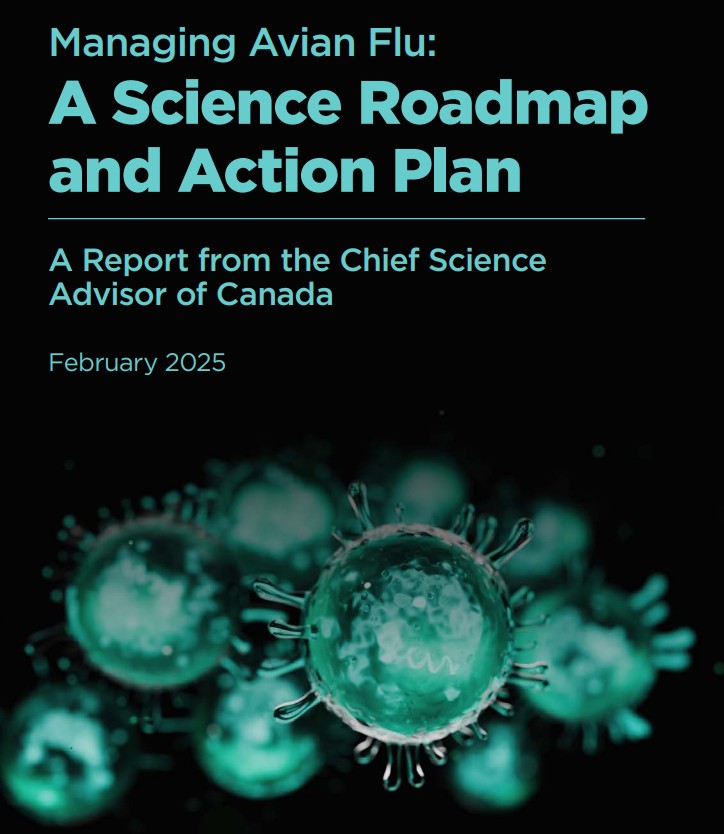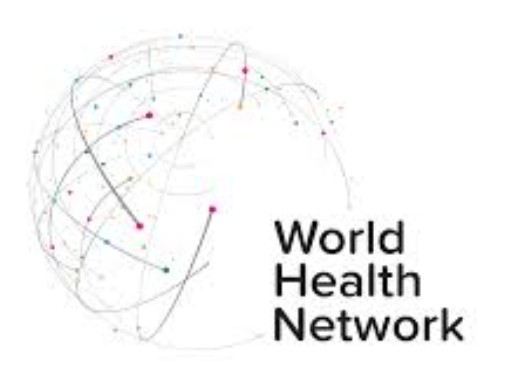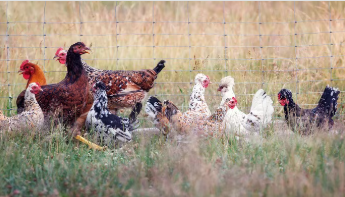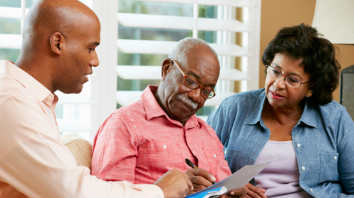Be Prepared

EXECUTIVE SUMMARY
Context
Large-scale outbreaks of highly pathogenic avian influenza are currently spreading across several countries, affecting many animal species beyond birds.
The disease, commonly known as avian or bird flu, is caused by the H5N1 virus, which has spread widely among wild birds around the globe since 2020-21, resulting in unprecedented mortality in wild birds and domestic poultry. The current virus strain, clade 2.3.4.4b, differs from the one circulating prior to 2020.
It is increasingly spreading beyond wild birds to a wide variety of land and marine mammals, including more recently to dairy cattle in the US. In addition to its devastating effect on the welfare of birds and other animals, there are increasing socioeconomic concerns stemming from the impact of H5N1 on the agrifood
sector with consequences on food security and pricing.
The detection of the H5N1 virus in hundreds of bird species and over 200 mammals highlights its threat to biodiversity and species at risk.
The new H5N1 virus clade has also demonstrated the ability to spread to humans through contact with infected animals, making it an occupational hazard for farm workers, veterinarians and those handling wild species. The disease presentation in humans
includes mild to severe respiratory symptoms and pink eye. So far, there is no evidence of human to human transmission, but the current circulating H5N1 strain has the potential to evolve or reassort (including with other influenza viruses) which could result in a virus capable of widespread infection and severe illness in people with little forewarning…


H5N1 Safety Guidelines for Individuals
H5N1 avian influenza is a highly infectious virus that affects wild birds, chickens, and other farm birds. In some cases, it has also been found in mammals, including humans. The virus has spread globally, but in the United States, cattle have been infected, and high levels of H5N1 have been detected in milk collected from farms in certain regions. Farmworkers, veterinarians, and other individuals have also been infected. This guidance is designed to help individuals reduce their risk of infection. While most recommendations apply globally, dairy-specific precautions are tailored to the U.S.
To protect yourself and your household, follow these essential precautions:
- Outdoors: Avoid Birds and Contaminated Areas (Global)
- Stay Away from Wild Birds and Droppings:
Avoid areas where wild birds congregate, such as parks, riverbanks, and lakes, to reduce exposure to droppings. - Handle Dead Birds Safely:
If you encounter sick or dead birds, wear gloves, masks and protective clothing. Report the situation to local wildlife or health authorities. Dispose of gloves and masks safely after use. - Protect Your Home:
Designate outdoor shoes and disinfect them before entering your home. Alternatively, take off shoes before entering to prevent contaminants from being brought indoors.
- Stay Away from Wild Birds and Droppings:
- Safe Handling and Consumption of Food
- Meat and Eggs (Global):
- Keep raw poultry and eggs separate from other foods during preparation.
- Use separate utensils and cutting boards for raw and cooked foods.
- Cook poultry and meat to an internal temperature of at least 165°F (74°C).
- Cook eggs until both the yolk and white are firm. Avoid consuming raw or undercooked eggs.
- Dairy Products (U.S.):
- Opt for Ultrapasteurized Milk:
Due to concerns about the potential survival of H5N1 virus with standard pasteurization, choose ultrapasteurized milk whenever possible. This method is highly effective at eliminating pathogens and is the safest option for dairy consumption in affected areas. - Standard Pasteurization (HTST) Milk:
Milk processed with standard pasteurization (high-temperature short-time, HTST) significantly reduces H5N1 concentrations but may not eliminate the virus entirely. HTST still carries a risk in areas where H5N1 is present. Whenever possible, prioritize ultrapasteurized milk or home pasteurization for added safety. - Home Pasteurization for Milk, Cream, and Other Dairy Products:
If ultrapasteurized milk is unavailable, perform home pasteurization to ensure safe dairy products: heat milk, cream, or other dairy products to above 165°F (74°C) and maintain this temperature for a few minutes, after it has reached this temperature. For a half-gallon of milk, the entire process, including heating and holding time, takes roughly 20 minutes.
Alternatively, heat milk in a pot until small bubbles form at the edges (just before boiling), then turn off the heat. - Avoid Unpasteurized Dairy Products:
Unpasteurized milk and dairy products, such as cream, butter, or cheese, pose the greatest risk of H5N1 contamination. Additionally, unpasteurized milk is associated with other risks, including bacterial infections like Salmonella, E. coli, and Listeria. These products should be avoided entirely in areas with H5N1. - Handling Unpasteurized Dairy Products Carefully:
If unpasteurized dairy must be used, meticulous care is required. Home pasteurization must ensure the milk or cream reaches 165°F (74°C) and is held at this temperature for a few minutes. Take great care in handling and storage to minimize contamination risks.
- Opt for Ultrapasteurized Milk:
- Meat and Eggs (Global):
- Practice Good Hygiene (Global)
In addition to handling food safely, maintaining good hygiene is critical to reducing risk:- Wash your hands thoroughly with soap and water after handling birds, eggs, meat, or contaminated surfaces.
- Use alcohol-based hand sanitizer if soap and water are unavailable.
- Stay Informed (Global)
- Follow local updates on H5N1 outbreaks and public health guidance.
- Consider getting the seasonal flu vaccine to reduce the risk of coinfection, which can complicate diagnosis and treatment.
By following these guidelines, you can reduce your risk of H5N1 exposure and help safeguard your health and your community.
Quarantining in Shared Spaces -- how to keep others as safe as possible
Quarantining in Shared Spaces — how to keep others as safe as possible
After the huge spike in new cases this past week, including our dear Data Report, I thought to pull this article from my archives — it gives some excellent breakdowns on basic principles regarding aerosol science and how to leverage physics to minimize airborne transmission in shared spaces when one or more household members are Covid-positive.
[ The original document for the ventilation diagrams, plus other useful information, can be found here: https://cleanaircrew.org/someone-in-my-home-has-covid-how-do-we-isolate-safely/ ]
The article is in an Indian publication and therefore references dealing with heat mitigation — given that it’s December in North America, the opposite problem is more likely to be relevant. The UK government released guidance several years ago around how best to ventilate when temps are below freezing, this is one of many such write-ups: https://www.gov.uk/guidance/ventilation-to-reduce-the-spread-of-respiratory-infections-including-covid-19#:~:text=Consistent%20house%20temperatures%20at%20or,lead%20to%20fewer%20cold%20draughts.
Some added tips from the one time our household dealt with keeping infection contained (all of the following assume well-fitting >n95’s are being worn in all common spaces): …

Pandemic flu: Be prepared
It is impossible to predict when the next flu pandemic will happen and how it will impact individuals and communities. So, it is important for Canadians to be prepared for different situations.
Learn how to protect yourself and your family from seasonal flu. Put this knowledge into practice and develop the habits that will help you to stay healthy in the event of a flu pandemic.


Get prepared for a pandemic or disease outbreak
Disease outbreaks can happen suddenly and without warning, often posing a threat to public health and safety. When an outbreak is limited to a particular area, it’s called an epidemic. When the outbreak spreads to the rest of the world, it becomes a pandemic.

Your Emergency Preparedness Guide
72 HOURS
IS YOUR FAMILY PREPARED?
If an emergency happens in your community, it may take emergency workers some time to reach you. You should be prepared to take care of yourself and your family for a minimum of 72 hours.
Learn how quick and easy it is to become better prepared to face a range of emergencies – anytime, anywhere. Use this guide to create your own emergency plan. Use the checklists to build a 72-hour emergency kit. These basic steps will help you take care of yourself and your loved ones during an emergency.
Although the consequences of various disasters can be similar, knowing the risks in your region can help you better prepare. Across Canada, we face a number of hazards, such as earthquakes in British Columbia, blizzards in Nunavut and tornadoes in Ontario. In addition to natural disasters, there are other types of risks, such as power outages and industrial or transportation accidents.
Preparedness Checklist

Food
Following a disaster there may be power outages that could last for several days. Stock canned foods, dry mixes and other staples that do not require refrigeration, cooking, water or special preparation. Be sure to include a manual can opener and eating utensils.
Water
Following a disaster clean drinking water may not be available. Your regular water source could be cut-off or compromised through contamination. Prepare yourself by building a supply of water that will meet your family’s needs during an emergency.
Low and No Cost Preparedness
Disasters are costly but preparing for them doesn’t have to be. In fact, taking time to prepare now can help save you thousands of dollars and give you peace of mind when the next disaster or emergency occur.
People with Disabilities
Disability intersects every demographic group—there are people with disabilities of all ages, races, genders or national origin. And, disabilities can impact a person in a variety of ways—both visible and invisible…
Older Adults
As an older adult, you may have specific needs after a disaster. Use the information on this page to assess your needs and take simple, low-cost steps that help you get better prepared. First, know your risk. Then, understand your needs during emergencies.
Caregivers
While caregiving can be overwhelming at times, taking three essential steps—assessing needs, engaging a support network, and creating a plan—can help caregivers feel more prepared and in control when disaster strikes.
Safety Skills
Take a first aid and CPR class. You can get more information about training from your local American Red Cross chapter. Getting certified protects you under Good Samaritan laws if you have to give first aid. Get more information about the supplies in a first aid kit.
Ready Kids
Disasters happen everywhere, and every member of the family can prepare. Preparedness for the future starts today. Whether you’re a kid or teen yourself, a parent or loved one, or work with youth, Ready Kids has tools and information to help…
Prepare Your Pets for Disasters
Your pets are an important member of your family, so they need to be included in your family’s emergency plan. To prepare for the unexpected follow these tips with your pets in mind:
- Make a plan.
- Build an emergency kit.
- Stay informed.


Backyard Flock Owners: Protect Yourself from Bird Flu
Steps to protect yourself
If birds in your flock have avian (bird) influenza (flu) A virus infection, or you suspect they might, take the following actions to protect yourself:
- Don’t touch sick or dead birds, their feces or litter, or any surface or water source (for example, ponds, waterers, buckets, pans, troughs) that might be contaminated with their saliva, feces, or any other bodily fluids without wearing personal protective equipment (PPE).
- Wear PPE when around sick or dead birds.
- As best as possible, during depopulation and while cleaning and disinfecting contaminated premises, avoid stirring up dust, bird waste, and feathers to prevent virus from dispersing into the air.

Avian Flu Poultry Workers
Avian flu is a viral disease and it can be very contagious and even deadly in poultry (e.g., chickens, turkeys, ducks). Of great concern are the highly pathogenic avian influenza(HPAI) viruses (e.g., H5N1, H7N9) that have killed millions of birds and have infected humans in other countries. If avian flu viruses are detected in the U.S., take appropriate precautions.


10 End-of-Life-Documents Everyone Should Have
and FAQs About End-of-Life Planning
A detailed and carefully designed end-of-life plan can also grant you control and agency over your end-of-life care and your estate once you have passed.
Life’s challenges are easier to manage when you have a plan. Preparation may not completely remove the emotional burden of loss or stress, but it is one of the greatest gifts you can give your loved ones after you are gone.
A detailed and carefully designed end-of-life plan can also grant you control and agency over your end-of-life care and your estate once you have passed.
Planning for end-of-life care doesn’t have to be complicated, especially with our help. We cover what documents you’ll need and how to obtain them to begin end-of-life planning.


Getting Your Affairs in Order Checklist:
Documents to Prepare for the Future
No one ever plans to be sick or disabled. Yet, planning for the future can make all the difference in an emergency and at the end-of-life. Being prepared and having important documents in a single place can give you peace of mind, help ensure your wishes are honored, and ease the burden on your loved ones.
